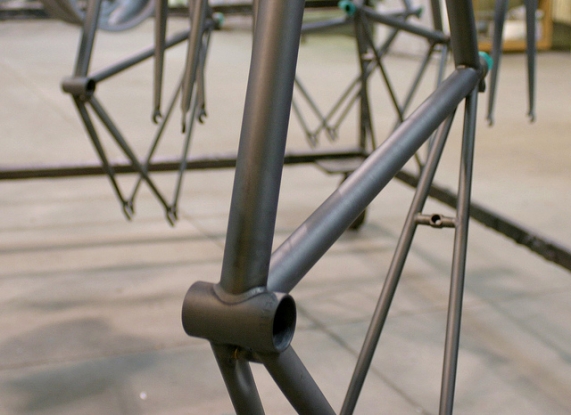Oversimplified: Steel Vs. Aluminum

Most city bikes are built on either steel or aluminum frames, and which one you pick will impact the life of your bike, even the quality of the ride. Read on for the how and why, and we'll help you navigate the materials market.
Aluminum frames are generally stiffer than steel, resulting in a harsher ride. When fractions of a second count, track racers prefer that rigidity. But for getting to the store over city streets, steel is a softer metal and offers a more forgiving ride.
No frame material is more durable than steel. It can ding, scratch, dent, even bend, and retain structural integrity. When well made and cared for, steel will last a lifetime.
The same isn't true for aluminum. Aluminum is more brittle, so it's more susceptible to failure through fatigue or damage. A single dent in the wrong place could render an aluminum frame unsafe to ride. And when aluminum fails, it fails catastrophically.
Think about it like this: glass will break before it bends. The same is true in many respects of aluminum. Steel on the other hand, will bend before it breaks, resulting in a far more resilient frame.
There's a misconception that steel frames are heavy, and aluminum frames are light. Not surprising, we make bridges out of one, and soda cans out of the other. And while it's true aluminum is lighter by volume as a metal, that property doesn't tell us the whole story.
See, to make aluminum frames strong enough to ride, builders have to make the tubes larger, using more material. That extra material adds extra weight and quickly an aluminum frame weighs just as much or more than steel.
How can you tell? There's a quick and easy visual test for material: Steel tubes are always cylindrical, and usually between 1"-1.5" in diameter. Aluminum tubes can be many shapes (square, triangular, fluted, etc) and are larger in diameter than steel.
Our bikes are made from a very strong and very light steel alloy called 4130 chromoly. In addition, the tubes are double butted, which means they're thicker at the welds for strength, and thinner in between to save weight.
We build with 4130, but there are lots of kinds of steel, and not all are created equal.
Cheap bikes often use straight gauge HiTensil steel. HiTensil steel is also light, but it's much weaker than 4130 chromoly, so builders have to use a lot more of it to achieve the same strength. Thus, HiTen frames are much heavier. When shopping, don't be afraid to ask, and stay away from the heavy stuff.
Exotic Materials
So what about carbon fiber, titanium, even bamboo? They can make beautiful bikes, but they aren't reasonable commuter materials. In general, they aren't pragmatic or priced for daily city riding.
There's a saying in the bike industry, "steel is real." Steel isn't the best choice because our bikes are made of steel. Our bikes are made of steel because it's the best choice for city commuters.
Keep in touch
Occasionally we share updates to show off new bicycles we've built, promote sales, and reveal new products added to our line-up. Choose a way to be informed:





